Painful lessons from WannaCry Ransomware
By: Preston Curry
Publication: The Community Banker, Summer 2017
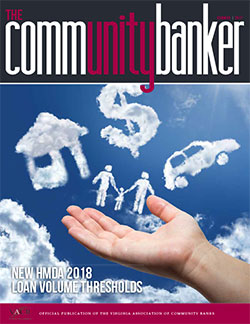 A specific type of malware named WannaCry made international headlines in May after achieving an unprecedented infection rate. Using EternalBlue, a recently leaked tool from the US Intelligence community, it installed malicious software that encrypted files then required victims to pay a ransom to restore them. The timing of this tool's release and subsequent use in such a widespread event has taught – and retaught - network administrators around the globe to revisit the basic lessons of security.
A specific type of malware named WannaCry made international headlines in May after achieving an unprecedented infection rate. Using EternalBlue, a recently leaked tool from the US Intelligence community, it installed malicious software that encrypted files then required victims to pay a ransom to restore them. The timing of this tool's release and subsequent use in such a widespread event has taught – and retaught - network administrators around the globe to revisit the basic lessons of security.


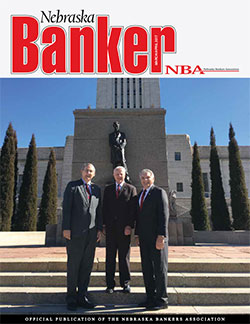

 Assessing risk is all about extrapolating meaning from potential. In other words, look at what could happen and consider how those things would affect you. The process can be as complicated or as simple as you choose to make it. At the end of the day, risk assessments are a way to become aware of potential issues and of controls to alleviate those dangers. You do not have to think of every potential scenario. In fact, considering what is common covers the majority of threats.
Assessing risk is all about extrapolating meaning from potential. In other words, look at what could happen and consider how those things would affect you. The process can be as complicated or as simple as you choose to make it. At the end of the day, risk assessments are a way to become aware of potential issues and of controls to alleviate those dangers. You do not have to think of every potential scenario. In fact, considering what is common covers the majority of threats.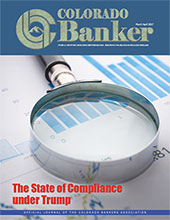 Floods. Hurricanes. Tornadoes. Fire. Power outages. The zombie apocalypse (well, maybe not that one). You don't have to be in banking to know these threats exist in our world. Although they may not have an exhaustive, board approved Business Continuity Plan ready to go in an emergency, the average person has some awareness that disasters occur and an instinct on what to do:
Floods. Hurricanes. Tornadoes. Fire. Power outages. The zombie apocalypse (well, maybe not that one). You don't have to be in banking to know these threats exist in our world. Although they may not have an exhaustive, board approved Business Continuity Plan ready to go in an emergency, the average person has some awareness that disasters occur and an instinct on what to do: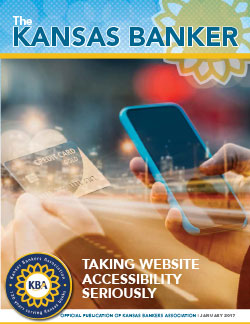 ADA website accessibility is a trending topic in the community banking industry. Why? Recently several financial institutions have received letters threatening lawsuits because banking websites are not "accessible." The Americans with Disabilities Act (ADA), enacted in 1990, is a civil rights law created to prohibit discrimination against individuals with disabilities. In 2010, the Department of Justice (DOJ) initiated the rulemaking process concerning website accessibility. This process consists of calls for public comments on proposed rules, impact and cost analysis, and finally acceptance into the federal register. Since 2010, the process has been continually delayed. As of right now, finalized rules are expected to be released sometime in 2018, leaving no clear guidelines to follow at the moment. Without these guidelines in place, how can your bank protect itself from opportunistic legal battles while committing to provide an accessible site to your customers? Accessibility policies and vendor management are the answer.
ADA website accessibility is a trending topic in the community banking industry. Why? Recently several financial institutions have received letters threatening lawsuits because banking websites are not "accessible." The Americans with Disabilities Act (ADA), enacted in 1990, is a civil rights law created to prohibit discrimination against individuals with disabilities. In 2010, the Department of Justice (DOJ) initiated the rulemaking process concerning website accessibility. This process consists of calls for public comments on proposed rules, impact and cost analysis, and finally acceptance into the federal register. Since 2010, the process has been continually delayed. As of right now, finalized rules are expected to be released sometime in 2018, leaving no clear guidelines to follow at the moment. Without these guidelines in place, how can your bank protect itself from opportunistic legal battles while committing to provide an accessible site to your customers? Accessibility policies and vendor management are the answer. There has been a lot of attention on website ADA compliance over the past few months. Several community banks have received demanding letters from law firms alleging the bank is violating the Americans with Disabilities Act (ADA). Purportedly these letters claim that unless the bank modifies its website to meet the World Wide Web Consortium's Web Content Accessibility Guidelines (WCAG), the bank will continue to violate ADA. So, what does this mean? Let's take a look at some common questions banks are asking about ADA compliance.
There has been a lot of attention on website ADA compliance over the past few months. Several community banks have received demanding letters from law firms alleging the bank is violating the Americans with Disabilities Act (ADA). Purportedly these letters claim that unless the bank modifies its website to meet the World Wide Web Consortium's Web Content Accessibility Guidelines (WCAG), the bank will continue to violate ADA. So, what does this mean? Let's take a look at some common questions banks are asking about ADA compliance.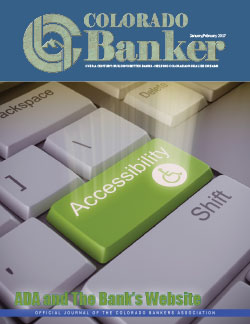
 Raise your hand if you are tired of constantly changing your password and sticking to whatever arbitrary rules seem to be in place at the time. Okay, now put your hand down because you are most likely drawing unnecessary attention to yourself, especially if you are in a coffee shop or on your couch at home surrounded by family. Everyone seems to grumble about password length and expirations, but the truth is: strong passwords are a necessary complication and their use isn't going away anytime soon. If anything, password complexity guidelines are shifting to be even more stringent, although there may be some light at the end of the extremely long tunnel.
Raise your hand if you are tired of constantly changing your password and sticking to whatever arbitrary rules seem to be in place at the time. Okay, now put your hand down because you are most likely drawing unnecessary attention to yourself, especially if you are in a coffee shop or on your couch at home surrounded by family. Everyone seems to grumble about password length and expirations, but the truth is: strong passwords are a necessary complication and their use isn't going away anytime soon. If anything, password complexity guidelines are shifting to be even more stringent, although there may be some light at the end of the extremely long tunnel.